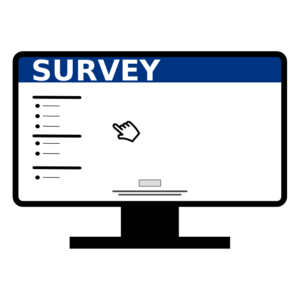Have a survey to write? Learn how to write market research questions. These tips provide some basic guidelines that will help ensure the success of your next research project.
Ask One Question at a Time
A common faux pas in the medical field is asking: “Do you smoke, drink or use drugs?” Your respondent might be left pondering… “Err… I have an occasional drink, I used to smoke and I don’t use drugs … So, ‘no’?”
Another example could be, “Which is the fastest drying and most economical adhesive for you?” Brand A might be the fastest to dry while Brand B takes only seconds longer and is more economical.
Doubling up questions can lead to respondent confusion and inaccurate data. Review your questions to ensure ideas are separated and simply stated; this will lead to more impactful insights.
Avoid Leading Words
Question: How much do you already like this post? (Please choose one.)
1. I love it.
2. It’s amazing.
3. It’s probably the best thing I’ve ever read.
Chances are you don’t believe any of those, and if this was an actual survey, you’d be frustrated and a little irritated. After all, none of these choices represent how you actually feel. If you’re forced to answer, you essentially would be tricked into giving a misleading response.
Additionally, the question above uses a leading structure. It presupposes an answer by including the word “already.” Plus, it only allows for agreement not dissent. Try to avoid language that shepherds respondents into one direction of thinking over another.
Further, studies have shown that even the words “could,” “should” and “might” produce a 20% difference in agreement to a question.
Use Direct Language
Avoid using long or complicated words and words that could have multiple meanings. Questions should be short, simple and concise. Try to use specifics; for example, instead of asking, “Do you watch NFL games consistently?”; try: “How many games per season, on average, do you watch?” This will lead to more precise, objective answers.
Offer Mutually Exclusive and Exhaustive Response Options
Respondents must fall into one category but not the others. For example, “What is your age?”
– 0-10
– 10-20
– 20-30
– 30-40
– 40+
The exhaustive part of this equation can also include written-in portions, such as…
– Option A
– Option B
– Option C
– Other (please specify: ____________________)
This technique helps to make surveys precise and trouble-free for survey respondents.
Include a “Prefer Not to Answer” Option

Respondents may sometimes feel uncomfortable providing an answer to a question which asks for sensitive information.
One example: “What is your annual household income?”
For demographic questions, or any other questions which could be considered sensitive, we often recommend providing a PNA (prefer not to answer) option so respondents have a way to bypass a question without having to provide any sensitive information. This can help reduce the number of respondents who choose to provide an inaccurate answer just to move forward with the survey, helping the data remain as clean as possible.
In addition, different cultural groups may respond differently. One study found that while U.S. respondents skip sensitive questions, Asian respondents often discontinue the survey entirely.
Rate the Scale Appropriately (Balanced vs. Unbalanced)
Unbalanced scales may work better for some situations yet promote bias in others.
For instance, a healthcare service might use an Excellent – Very Good – Good – Fair scale where “Fair” is the lowest customer satisfaction point because they believe “Fair” is unacceptable and would require swift correction.
The key is to correctly interpret the scale. If “Fair” is the lowest point on a scale, then a result slightly better than fair is still not an acceptable rating.
Additionally, scale points should represent equidistant points on a scale – they should have equal conceptual distance from one point to the next. Set your bottom point as the worst possible situation and top point as the best possible, then evenly spread the rating labels in-between.
Abide by these tried-and-true writing tips and your surveys will bring about more actionable insights and market research success. Need additional help on how to write market research questions? Contact us.





